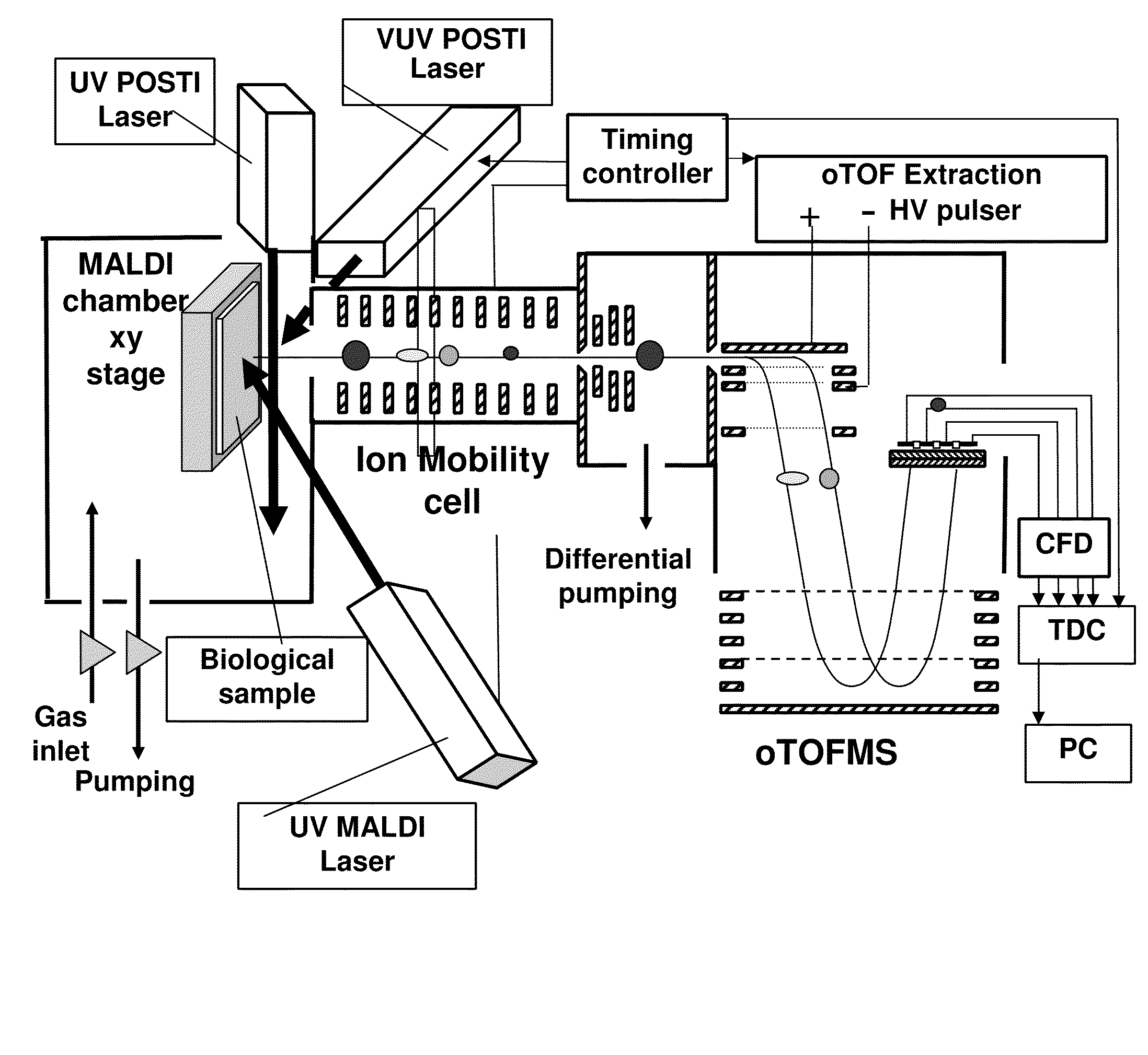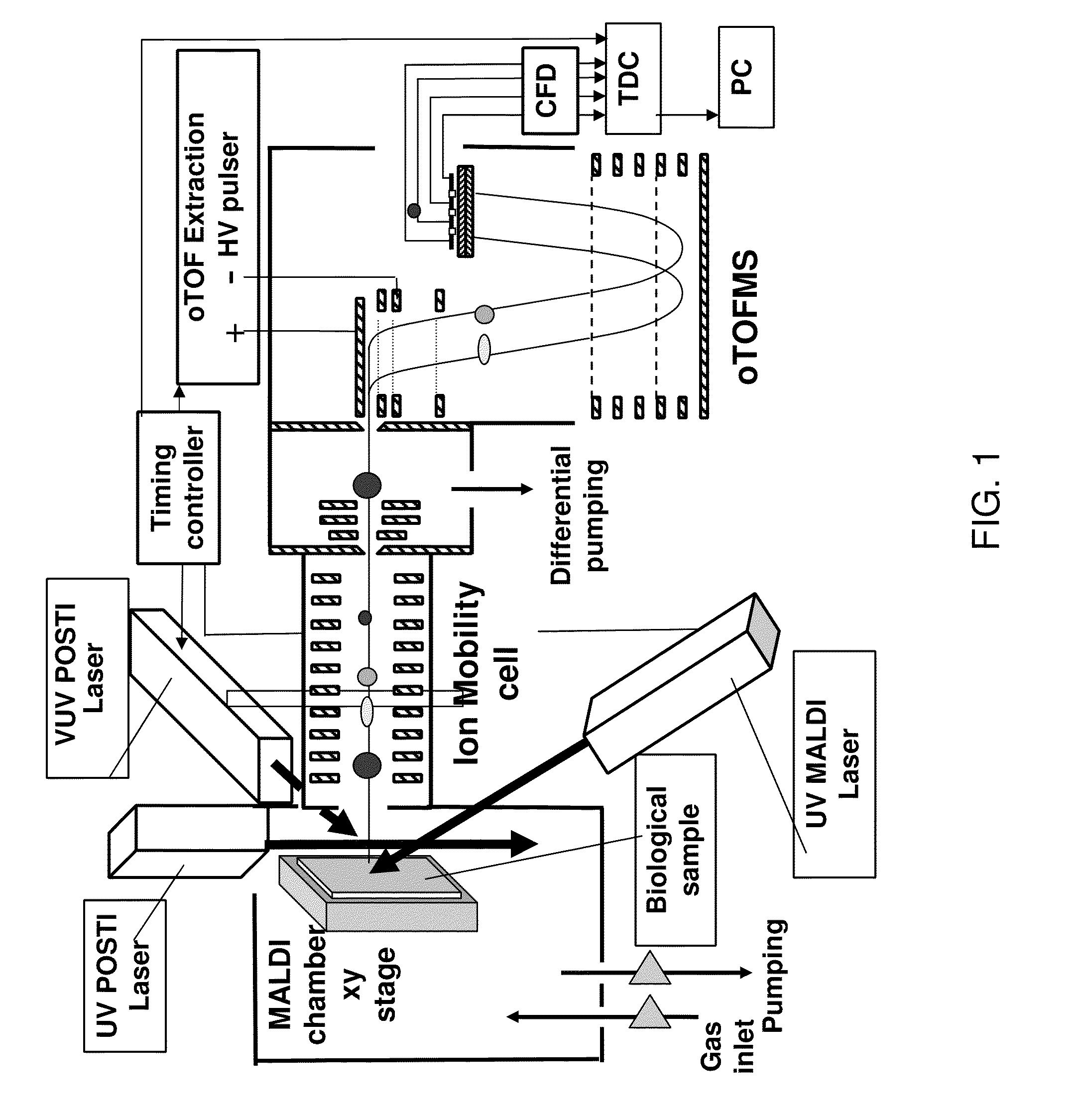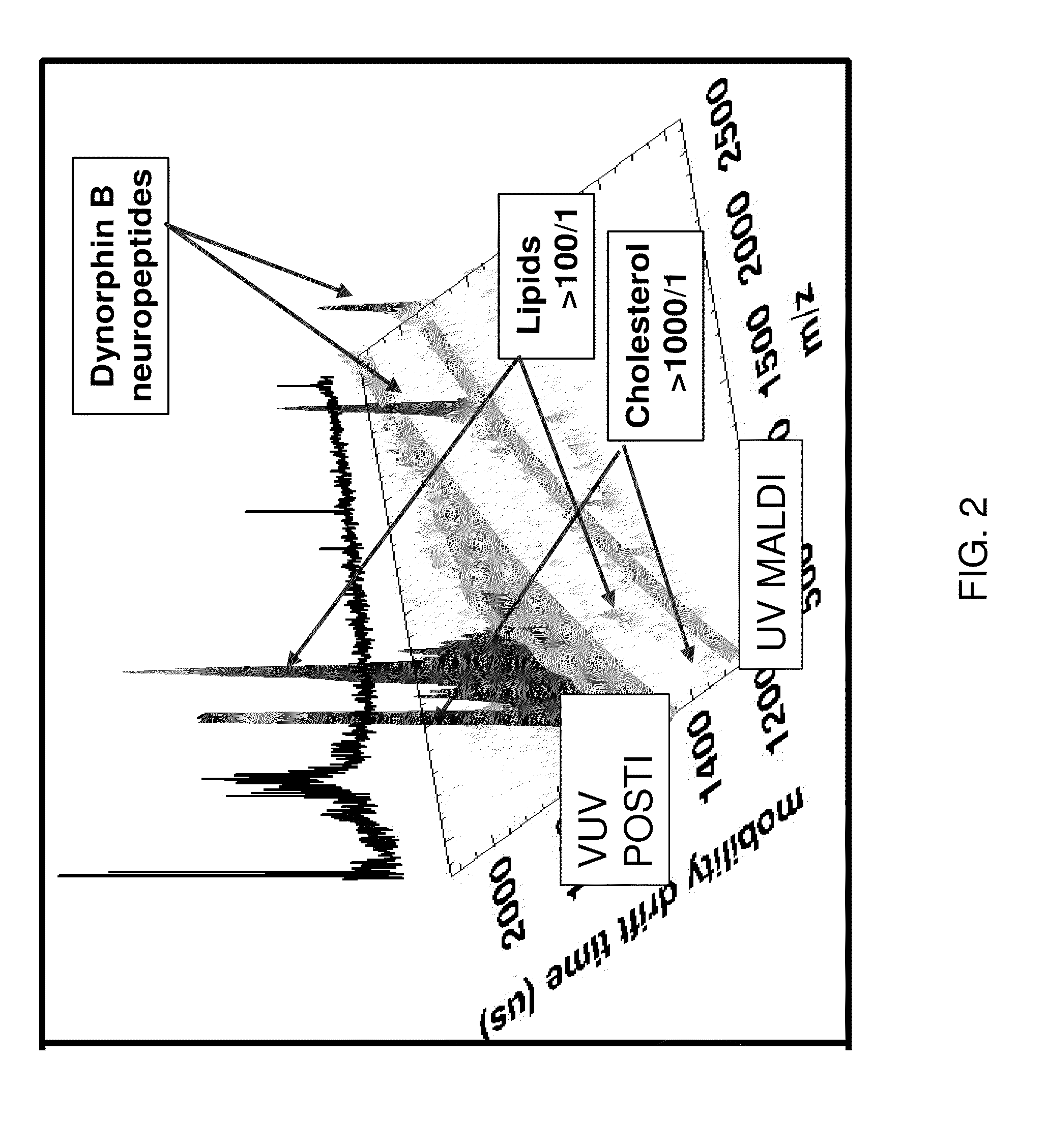Post-ionization of neutrals for ion mobility otofms identification of molecules and elements desorbed from surfaces
a neutral ionization and surface technology, applied in the field of mass spectrometry, can solve the problems of limited practical mass spectrometry imaging signal, thin tissue layer of applied matrix film, limited ion direct production of maldi for analysis, etc., and achieve the effect of efficient measuremen
- Summary
- Abstract
- Description
- Claims
- Application Information
AI Technical Summary
Benefits of technology
Problems solved by technology
Method used
Image
Examples
Embodiment Construction
[0037]Matrix addition to a tissue sample is problematic at best. The necessity of adding large molar amounts of organic matrix to desorb a small number of analyte molecules from a surface is substantially eased by the use of submonolayer coverages of nanoparticulates of carbon or gold (AuNP) as matrices. For example, pure Au400NP (1 nm diameter) nanoparticles (having 400 atoms) act as a highly efficient MALDI matrix. When Au400NP (1 nm diameter) particles are injected at submonolayer doses into the first 10 nm of a solid sample (e.g. pure protein film) or into the near surface region of a tissue sample, intact lipids, peptides and proteins are desorbed with an intensity that is superior to conventional organic matrices. Thus, gold and carbon nanoparticles allow the matrix to be a minority component of the sample by a ratio of 1:1000. This is the reverse of the typical MALDI experiment where 1000 organic matrix molecules activate one analyte molecule. A comparative study of these two...
PUM
 Login to View More
Login to View More Abstract
Description
Claims
Application Information
 Login to View More
Login to View More - R&D
- Intellectual Property
- Life Sciences
- Materials
- Tech Scout
- Unparalleled Data Quality
- Higher Quality Content
- 60% Fewer Hallucinations
Browse by: Latest US Patents, China's latest patents, Technical Efficacy Thesaurus, Application Domain, Technology Topic, Popular Technical Reports.
© 2025 PatSnap. All rights reserved.Legal|Privacy policy|Modern Slavery Act Transparency Statement|Sitemap|About US| Contact US: help@patsnap.com



